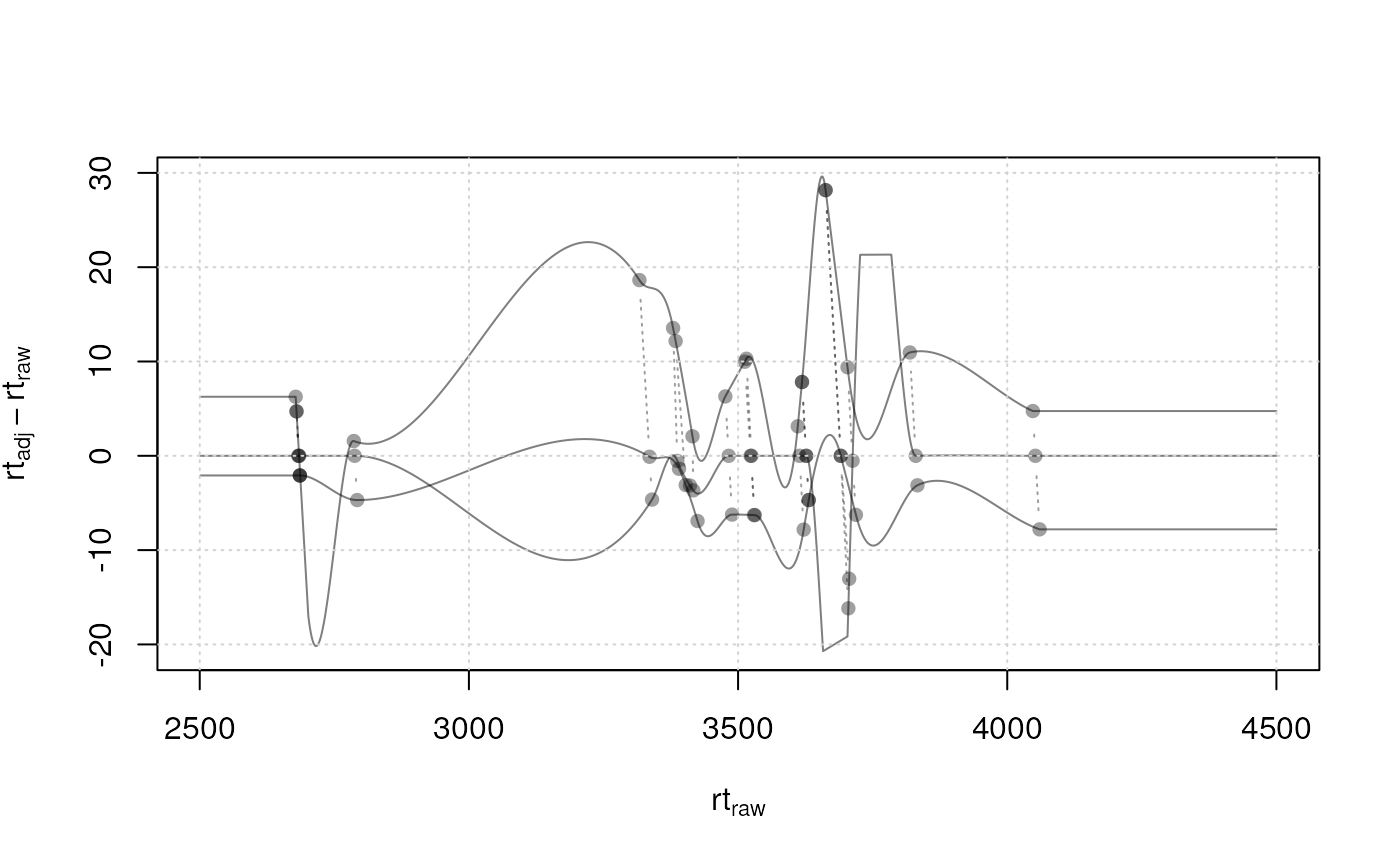The plotAdjustedRtime function plots the difference between the adjusted
and raw retention times on the y-axis against the raw retention times on
the x-axis. Each line represents the results for one sample (file).
If alignment was performed using the peak groups method (see
adjustRtime() for more infromation) also the peak groups used in the
alignment are visualized.
Usage
plotAdjustedRtime(
object,
col = "#00000080",
lty = 1,
lwd = 1,
type = "l",
adjustedRtime = TRUE,
xlab = ifelse(adjustedRtime, yes = expression(rt[adj]), no = expression(rt[raw])),
ylab = expression(rt[adj] - rt[raw]),
peakGroupsCol = "#00000060",
peakGroupsPch = 16,
peakGroupsLty = 3,
ylim,
...
)Arguments
- object
A
XcmsExperiment()orXCMSnExp()object with the alignment results.- col
color(s) for the individual lines. Has to be of length 1 or equal to the number of samples.
- lty
line type for the lines of the individual samples.
- lwd
line width for the lines of the individual samples.
- type
plot type (see
par()for options; defaults totype = "l").- adjustedRtime
logical(1)whether adjusted or raw retention times should be shown on the x-axis.- xlab
the label for the x-axis.
- ylab
the label for the y-axis.
- peakGroupsCol
color to be used for the peak groups (only if alignment was performed using the peak groups method.
- peakGroupsPch
point character (
pch) to be used for the peak groups (only if alignment was performed using the peak groups method.- peakGroupsLty
line type (
lty) to be used to connect points for each peak groups (only if alignment was performed using the peak groups method.- ylim
optional
numeric(2)with the upper and lower limits on the y-axis.b- ...
Additional arguments to be passed down to the
plotfunction.
Examples
## Load a test data set with detected peaks
faahko_sub <- loadXcmsData("faahko_sub2")
## Disable parallel processing for this example
register(SerialParam())
## Performing the peak grouping using the "peak density" method.
p <- PeakDensityParam(sampleGroups = c(1, 1, 1))
res <- groupChromPeaks(faahko_sub, param = p)
## Perform the retention time adjustment using peak groups found in both
## files.
fgp <- PeakGroupsParam(minFraction = 1)
res <- adjustRtime(res, param = fgp)
#> Performing retention time alignment using 19 anchor peaks.
#> Warning: Span too small for 'loess' and the available number of peak groups, resetting to 0.21
#> Warning: Adjusted retention times had to be re-adjusted for some files to ensure them being in the same order than the raw retention times. A call to 'dropAdjustedRtime' might thus fail to restore retention times of chromatographic peaks to their original values. Eventually consider to increase the value of the 'span' parameter.
## Visualize the impact of the alignment.
plotAdjustedRtime(res, adjusted = FALSE)
grid()

